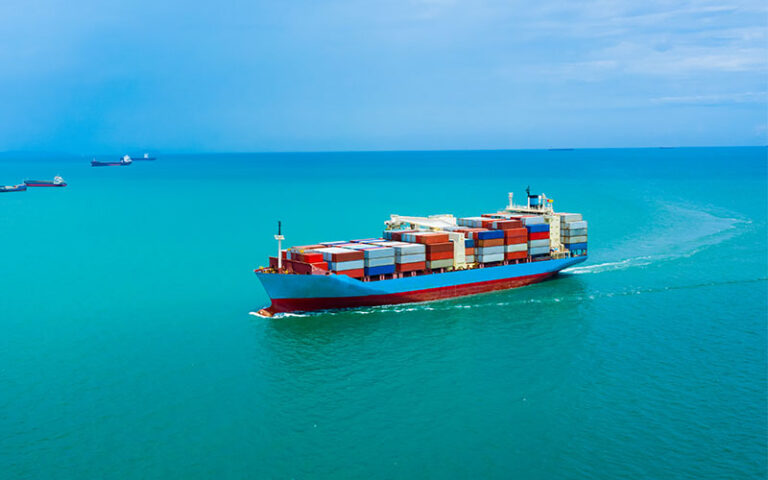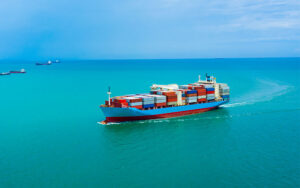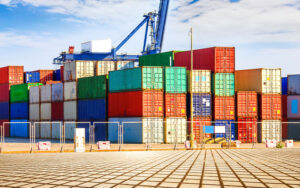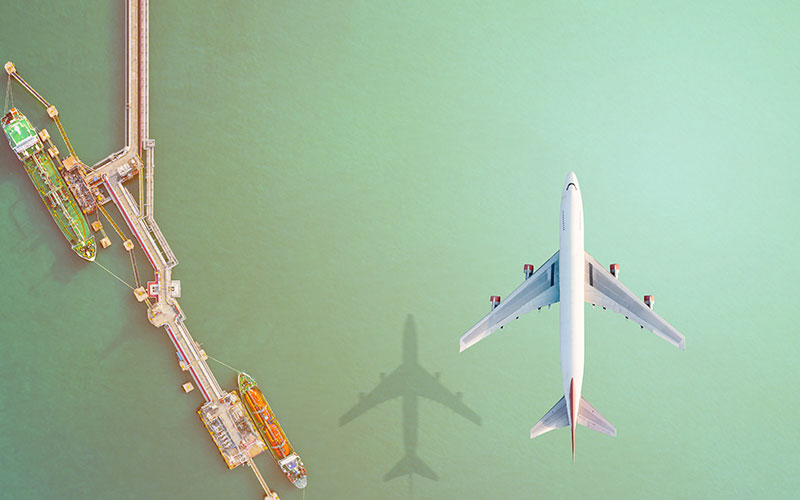The vast ocean plays the most important role in world trade. Ocean freight accounts for 90% tonnage of international shipping. It is the most cost-effective method for transportation and large ocean carriers can move extremely heavy freight. Although it is a relatively slow way to move your goods, it is significantly cheaper than air freight (around five times cheaper) as well as efficient.
While it doesn’t suit every business, it is an option when transporting higher volumes of goods especially for Bangladesh where we have the ‘Bay of Bengal’. Although it is one of the most straightforward shipping methods, shippers must consider some crucial factors. Let’s look at how international ocean freight shipping works and what are the most critical factors. ABN Cargo LTD. is a leading freight forwarder company in Bangladesh to fulfil your requirements with proper services.
What is Full Container Load (FCL)?
For a large volume of cargo, the best option is FCL. FCL shipping refers to large cargo loads that can fill an entire 20’ or 40’ shipping container. As a whole, it doesn’t involve shipment consolidation. The goods are packed, and the container is sealed at the factory. Unloading takes place at the destination warehouse.
Where possible, shippers should opt for FCL over LCL as it has significant advantages. Loading and unloading aren’t shared, improving transit times. Containers are sealed, and there is less handling, resulting in a reduced likelihood of damaged goods. The survey is easy and takes minimum time. FCL is much cheaper per unit than LCL because you pay a flat rate for each container.
However, if you don’t have enough goods to fill a container can consider an alternative method such as LCL, air shipment etc.
Less than Container Load (LCL)
LCL shipments aren’t large enough to fill an entire 20’ or 40’ shipping container. Shipping companies offer consolidation opportunities to importers and exporters who want to ship goods in smaller quantities.
There are some significant advantages to LCL shipping. You only pay for the number of goods you’re shipping rather than a full container. By shipping fewer goods more often, you don’t need as much warehouse space (which can be costly). Finally, during busy periods, it can be easier to find LCL space as so many importers/exporters follow this process.
The downsides of LCL shipping are quite significant. LCL freight rates are much more expensive. It requires more processing and handling to FCL, increasing the chances of your goods being damaged. LCL shipments must be loaded and unloaded from various containers, adding to the transit time.
How to Decide Between FCL and LCL Shipping
It can be challenging to decide which method to choose. Generally, if you can fill 3/4th or more of a container, FCL is cheaper than LCL. Anything below 3/4th will probably be cheaper to transport via LCL shipping as per our experience.
However, you must also consider how long it will take to reach the destination. LCL transit can be up to two weeks slower than FCL. Also, your merchandise is more likely to be damaged in LCL as it is a shared container.
While LCL is an excellent modern solution for international shipping, it’s more beneficial to use FCL if possible.
How Ocean Freight Shipping Works
There are several steps to the ocean freight shipping process.
The initial step is when a buyer and seller agree to the terms of a sale. They must decide on an incoterm under which the transaction takes place. This determines how the ownership and risk transfer occurs and who is in charge of the shipping process and costs.
All goods must then be labelled and packaged to meet shipping and transportation standards.
The next step is negotiating shipping rates and booking the freight shipment. It is often beneficial to hire a shipping agent or a freight forwarding service to assist with this step. They have the expertise, knowledge, experience, and contacts to make for a smooth process.
Once the goods arrive at the port before departure, they will be readied for transit. Depending on whether they’re FCL or LCL, this process will vary.
The shipping line must issue and sign a bill of lading(BL) after the cargo has been loaded. This is a document of title and serves as legal proof of the buyer’s and seller’s agreement. All information on this document must be accurate.
Before the ship sets sail, the shipment goes through customs and processing at the port of origin.
When the goods have arrived at the destination, they must pass through customs clearance before being granted legal entry to the country. Tariffs, taxes, duties, and any related charges must be covered. Again, a freight forwarding service or customs broker can help with this step.
The last leg of the journey involves getting the goods from the port to the warehouse or storage space that the buyer uses. This can be done via road, air, or rail transport. Truck freight is the go-to from this point.
Other Factors that Contribute to the Price
Besides the freight rates, other factors contribute to the price of ocean freight shipping:
- GRI (General Rate Increases)
- Spot prices: usually offered on late notice
- Holiday related delays
- Seasonal price spikes
- Cumbersome goods
- Warehousing costs
- Trucking costs
- Insurance
- Other surcharges
Expertise Plays a Key Role
International freight shipping is a complicated process that involves stringent rules and a lot of paperwork. A lack of expertise and professional knowledge can lead to costly mistakes. If you’re new to the world of international shipping, hire the help of an experienced customs broker or freight forwarder.
If you require international trade help, ABN Cargo LTD. where we always have a solution for our valued clients.








